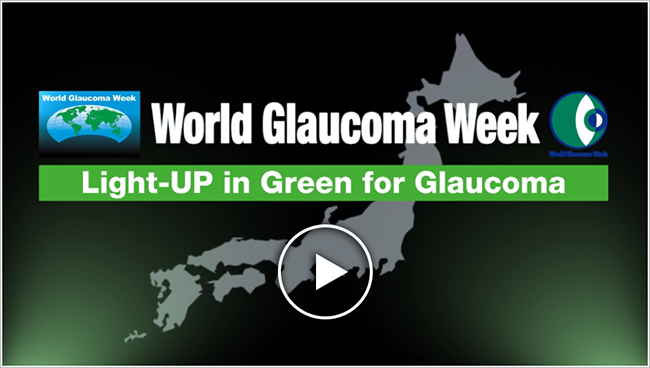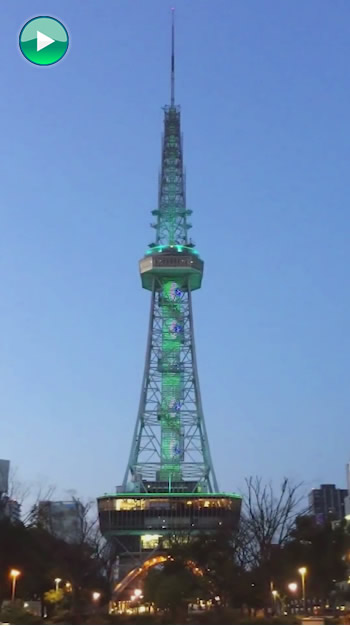This video has sounds. Please pay attention to the playback volume.
Click here for the soundless version.
The “Light up in GREEN” movement in Japan
Glaucoma is currently the leading cause of adult blindness in Japan. A large scaled population-based study in Japan, the Tajimi Study, discovered that 1 in 20 people over the age of 40 has glaucoma. Since the prevalence of glaucoma is known to increase with age, the growing number of the elderly population in Japan (and globally) predicts a further increase in glaucoma patients. The Tajimi study also revealed that over 90% of the glaucoma patients discovered in the study had been undiagnosed or had not been treated at the time of the study. One reason for the delayed diagnosis is that glaucoma (especially normal tension glaucoma) lacks symptoms in the earlier stage.
Unfortunately, glaucoma is not a curable disease to date. The best we can do is to attempt to maintain the visual function that remains at the point of diagnosis. If we are able to diagnose and treat glaucoma at an early stage, it may be possible to offer the patient a lifetime of quality vision. Methods for glaucoma diagnosis, glaucoma medication, surgical techniques have all dramatically improved in the recent years, making the possibility of saving a glaucoma patient much higher than in the past. However, if the timing of diagnosis is too late, or if the patient does not adhere to treatment, visual impairment that could have been prevented may occur.
Glaucoma treatment is usually a lifetime treatment of eye drops. Since the patients do not experience any improvement from the treatment, adherence to treatment is often difficult. We believe that intervention from medical staffs may be able to improve on patients’ adherence by deepening their understanding of the disease and the necessity of treatment.
But all of this is not achievable if patients do not visit medical facilities asking for help. The biggest problem is that most patients have no or very little knowledge about glaucoma and do not even think of visiting an eye doctor until they have serious visual impairment. This is why we feel it is important that all people should be educated about the risks of glaucoma and the importance of its treatment.
The “Light up in GREEN” movement is a movement led by the Japan Glaucoma Society to light up public (and private) hospitals and institutions in green during World Glaucoma Week, to spread glaucoma awareness and impel latent patients to visit medical institutions. The green light represents hope for a lifetime of quality vision in glaucoma patients. Along with the “Light up in GREEN” movement, the JGS continues to work hard to enlighten and support glaucoma patients with free glaucoma check ups, lectures aimed at patients, advertisement through media, marches and petitions to the government.
We started the movement in 2015 in Tajimi and Nagoya, Japan. The first year, there were 5 participating institutions. We are proud to report that our movement has been expanding yearly, and this year a total of 733 institutions nationwide and overseas participated in the “Light up in GREEN” movement. We are aiming to further expand our movement both within Japan and internationally. We are always open to new offers to participate. (A certain criteria determined by the JGS must be met for approval of participation. Participation in this movement must be conducted on a non-profit basis, and will have to be self funded.)
Light Up in Green 2015

“Early Detection, Continuity and Hope”
Hope: The light of hope that your eyes during glaucoma treatment will remain visible forever.
Japan Glaucoma Society, Light-Up in Green committee
mail:jgs.wgw2@gmail.com




